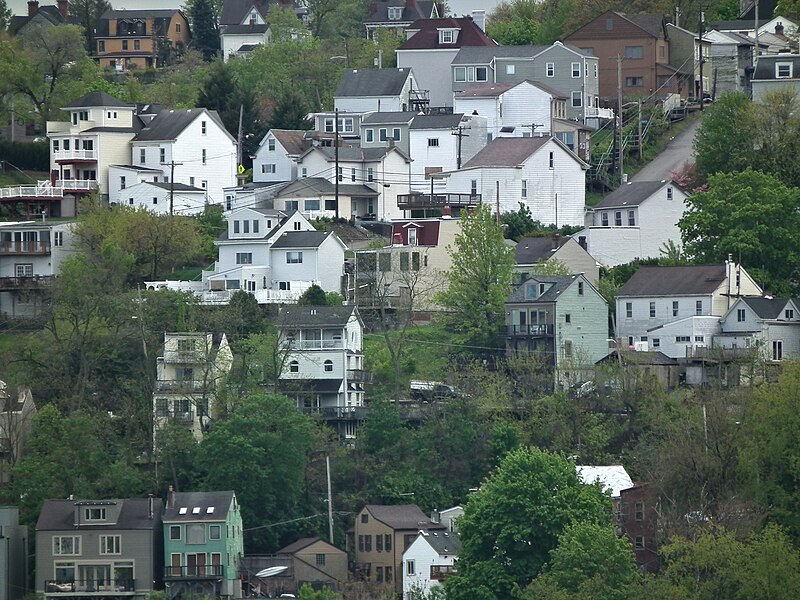
The slopes of Knoxville, an independent borough until it was taken into Pittsburgh in 1927. Below, two very different towers: the tower of St. Canice on the left and the U. S. Steel Tower on the right.

Comments

The slopes of Knoxville, an independent borough until it was taken into Pittsburgh in 1927. Below, two very different towers: the tower of St. Canice on the left and the U. S. Steel Tower on the right.


This is the kind of view that makes Pittsburgh unique among American cities. The pictures were taken from the intersection of Cederhurst Street and Estella Avenue in Beltzhoover.




Rooftops of Beechview houses with the tower of St. Canice Church, Knoxville, in the background.

Seen from a hilltop in Brookline. St. Basil’s is prominent on the skyline.

With the approach ramps to the 62nd Street Bridge in the foreground.


Pittsburghers love to show out-of-town visitors the inclines, the dinosaurs at the Carnegie, the view from Mount Washington, the sandwiches with cole slaw and French fries piled inside, and other attractions of the big city. But often what the visitors talk about most is that they can’t believe how those houses cling to the side of a cliff. Here are some views of the South Side Slopes from the Bluff across the river, so that you can show out-of-town friends who have not yet visited that houses do indeed grow that way in Pittsburgh.



South 18th Street, which used to be the Brownsville Plank Road before it was taken into the city of Pittsburgh, snakes up through the South Side Slopes, following an ancient track that probably predates European settlement. It makes a long loop around a lumpy eminence known locally as Billy Buck Hill, where typical tall and narrow Slopes houses crowd on absurdly precipitous lots. These houses in the foreground are lined up along St. Paul Street. In the background, across the Mon, we see Oakland, which is as usual full of cranes.
The usual story of the etymology of Billy Buck Hill has to do with goats having been kept there, and that seems plausible. But old Pa Pitt is not willing to swear to it, because it has the look of one of those ex-post-facto etymologies suggested speculatively as the probable reason for the name, and then picked up as the only possible explanation and presented as fact.